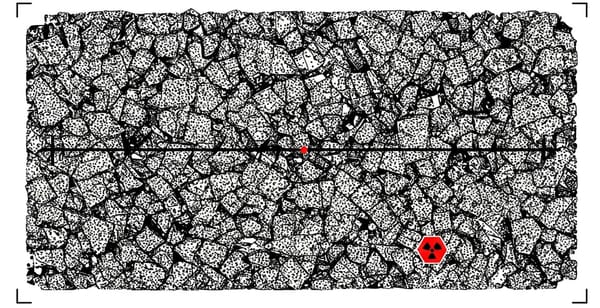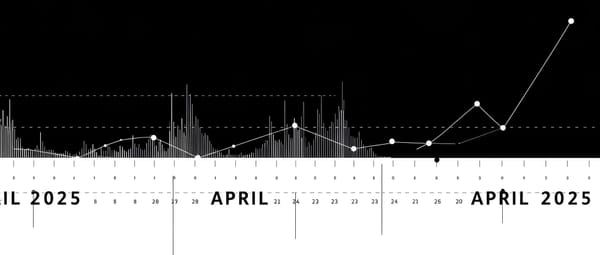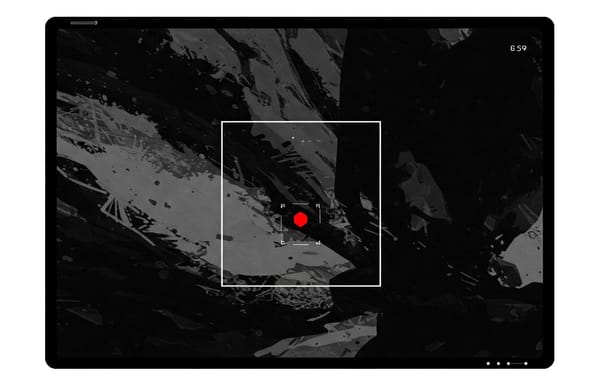Why Helium-4 is Preferred Over Helium-3 for Neutron Detectors
Helium-3 vs Helium-4 as Neutron Detector Gases: A detailed comparison of their mechanisms, efficiency, costs, and applications. Discover why Helium-4 is a strong alternative in specific scenarios.
Helium-4 is gaining traction as the preferred choice for neutron detectors, surpassing the traditional use of helium-3. This shift is driven by several key advantages offered by helium-4, including its higher abundance, lower cost, and superior performance in high gamma-ray environments. This article delves into the properties of both isotopes, the mechanisms of neutron detection, and the reasons behind the growing preference for helium-4 in this vital technology.
Advantages of Helium-4 over Helium-3 for Neutron Detectors
While helium-3 detectors have long been the standard for neutron detection, helium-4 presents several compelling advantages:
- Higher abundance and lower cost: Helium-4 is significantly more abundant than helium-3, making it a considerably more affordable and readily available material 1. This cost-effectiveness is a major driver in the transition towards helium-4 detectors, particularly with the rising demand for neutron detection technologies across various sectors.
- Lower gamma sensitivity: Helium-4 detectors exhibit lower sensitivity to gamma rays than their helium-3 counterparts 3. This characteristic is essential in applications where neutrons must be detected in environments with high gamma-ray background radiation, such as nuclear security or medical imaging.
- Better energy and timing resolution: Helium-4 detectors offer improved energy and timing resolution, making them well-suited for applications like neutron spectroscopy and time-of-flight measurements 4. This enhanced resolution allows for more precise and accurate measurements of neutron energies and arrival times.
Properties of Helium-4 and Helium-3
Understanding the distinct properties of helium-4 and helium-3 is crucial to grasping their respective roles in neutron detection. The table below summarizes these key properties:
Helium-4, with its two protons and two neutrons, possesses a "doubly magic" structure, resulting in exceptional stability 1. Its high binding energy of 28295.7 keV 7 further quantifies this stability7. At temperatures below 2.17 K, helium-4 transitions into a superfluid state, exhibiting zero viscosity and flowing without resistance 1. This superfluid behavior leads to intriguing phenomena like the "Rolling film," where a thin film of helium-4 climbs the walls of its container 9.
Helium-3, with two protons and one neutron, is a fermion with a half-integer spin, contrasting with the bosonic nature of helium-4 6. This difference in spin leads to distinct behavior at low temperatures. Helium-3 becomes a superfluid at a much lower temperature of approximately 2 mK (0.002 K) 10. In addition to its use in neutron detection, helium-3 is also being explored as a potential fuel for nuclear fusion reactors due to its unique properties 11.
How Neutron Detectors Work
Neutron detection presents a unique challenge due to the neutral nature of neutrons. Unlike charged particles, neutrons do not directly ionize matter, making their detection more complex. Neutron detectors rely on indirect methods, employing a conversion process where an incident neutron interacts with a nucleus to generate secondary charged particles, such as protons or alpha particles 12. These charged particles are then detected, allowing scientists to infer the presence of neutrons 12.
Two primary mechanisms facilitate neutron detection:
- Elastic scattering: This mechanism is particularly effective for detecting fast neutrons with high kinetic energy. The neutron collides with a nucleus, typically a light nucleus like hydrogen or helium, transferring a portion of its energy to the nucleus. This recoiling nucleus then ionizes the surrounding material, producing a detectable signal 14. While elastic scattering is effective for fast neutrons, a different mechanism is employed for detecting slower neutrons.
- Neutron capture: This mechanism is utilized to detect slower neutrons. The neutron is captured by a nucleus, leading to the formation of a heavier, unstable nucleus. This unstable nucleus subsequently decays, emitting detectable radiation, such as charged particles or gamma rays 14.
Helium-4 Neutron Detectors
Helium-4 gas fast neutron scintillation detectors are increasingly used in applications demanding high temporal and energy resolutions, such as time-of-flight measurements and multiplicity counting 5. These detectors operate based on the elastic scattering mechanism. When a neutron interacts with a helium-4 nucleus, the recoiling nucleus excites other helium atoms, emitting ultraviolet light. This light is then converted to blue (420 nm) using a wavelength shifting material 14. Silicon photomultipliers (SiPMs) are employed to detect this light and convert it into a measurable signal 17.
Using SiPMs in helium-4 detectors offers a significant advantage in improved light collection and a more compact design than traditional photomultiplier tubes (PMTs) 17. This advancement contributes to developing more efficient and compact neutron detection systems.
Helium-4 detectors are particularly well-suited for applications like spent nuclear fuel monitoring 17 and Radiation Portal Monitors 18 due to their unique characteristics:
- Insensitivity to gamma radiation: Helium-4 has a low electron density, making it inherently less sensitive to gamma rays 3. This allows effective neutron detection even in environments with strong gamma-ray backgrounds.
- Preservation of energy and timing information: Helium-4 detectors do not require moderators to slow down neutrons unlike thermal neutron detectors4 Helium-4 detectors do not require moderators to slow down neutrons, unlike thermal neutron detectors.
- Abundance and availability: Helium-4 is a naturally abundant and readily available material 17, making it a more sustainable and cost-effective than helium-3.
Helium-3 Neutron Detectors
Helium-3 neutron detectors are typically proportional counters filled with helium-3 gas 19. These detectors operate based on the neutron capture mechanism. When a helium-3 nucleus captures a neutron, it produces a proton and a triton, which ionize the gas within the detector and generate a detectable signal.
Helium-3 detectors have been widely employed in various applications, including:
- Nuclear material assay: Helium-3 detectors determine the amount of fissionable material in a sample 19. This application is crucial in nuclear security and safeguards to monitor and control nuclear materials.
- Moisture content measurement: These detectors use a fast neutron source to measure the moisture content in materials like soil and concrete 19. This application finds use in civil engineering, agriculture, and environmental monitoring.
- Oil well logging: Helium-3 detectors measure the oil content within the strata of an oil well during drilling operations 19. This application is vital for exploration and production in the oil and gas industry.
- Safeguard applications: Helium-3 detectors verify the global inventory of fissionable material, contributing to nuclear non-proliferation efforts 19.
Comparison of Advantages and Disadvantages
Helium-4 detectors, relying on elastic scattering, offer advantages in abundance, gamma insensitivity, and energy/timing preservation. However, they generally have a lower neutron capture cross-section compared to helium-3. Helium-3 detectors, while facing challenges related to scarcity and cost, benefit from a high neutron capture cross-section and a mature technology base.
Conclusion
Helium-4 is emerging as the preferred material for neutron detectors due to its abundance, cost-effectiveness, and superior performance, particularly in environments with high gamma-ray background. The scarcity of helium-3 2 and national security concerns related to its limited supply 21 further contribute to this shift. However, ongoing research continues to explore and address the potential limitations of helium-4 detectors, such as their lower neutron capture cross-section compared to helium-3.
While helium-3 detectors retain their relevance in specific applications, the advantages of helium-4 are driving its adoption across diverse fields, including nuclear security, materials science, and fundamental research. This transition towards helium-4 signifies a notable advancement in neutron detection technology, paving the way for more efficient, cost-effective, and reliable neutron detection methods.
The future landscape of neutron detection might involve a combination of helium-4 and helium-3 technologies, with each isotope catering to specific needs and applications. Further research and development will likely focus on optimizing both types of detectors and exploring novel materials and techniques to enhance neutron detection capabilities.
While helium-3 detectors remain relevant in specific applications, the advantages of helium-4 are driving its adoption across diverse fields, including nuclear security, materials science, and fundamental research. This transition towards helium-4 signifies a notable advancement in neutron detection technology, paving the way for more efficient, cost-effective, and reliable methods.
Works cited
1. Helium-4 - Wikipedia, accessed March 2, 2025, https://en.wikipedia.org/wiki/Helium-4
2. Lithium 6 vs Helium 3 for Neutron Detection | Scintacor, accessed March 2, 2025, https://scintacor.com/wp-content/uploads/2024/02/Lithium-6-vs-Helium-3-for-Neutron-Detection-1.pdf
3. Helium-4-based scintillation detector technology is emerging as a strong alternative to pulse-shape discrimination-capable organ, accessed March 2, 2025, https://mtv.engin.umich.edu/wp-content/uploads/sites/431/2023/03/Searfus-Abstract.pdf
4. www.arktis-detectors.com, accessed March 2, 2025, https://www.arktis-detectors.com/fileadmin/user_upload/ARK-S670-FND-0818.pdf
5. Timing Characterization of Helium-4 Fast Neutron Detector with EJ-309 Organic Liquid Scintillator - EPJ Web of Conferences, accessed March 2, 2025, https://www.epj-conferences.org/articles/epjconf/pdf/2018/05/epjconf_animma2018_07005.pdf
6. Helium-3 - Wikipedia, accessed March 2, 2025, https://en.wikipedia.org/wiki/Helium-3
7. Helium-4 - isotopic data and properties - ChemLin, accessed March 2, 2025, https://www.chemlin.org/isotope/helium-4
8. Helium-3 - chemeurope.com, accessed March 2, 2025, https://www.chemeurope.com/en/encyclopedia/Helium-3.html
9. Superfluid helium-4 - Wikipedia, accessed March 2, 2025, https://en.wikipedia.org/wiki/Superfluid_helium-4
10. Helium-3 - Super Fluids, accessed March 2, 2025, https://superfluidsiiti.weebly.com/helium-3.html
11. Helium-3 - (Astrophysics I) - Vocab, Definition, Explanations | Fiveable, accessed March 2, 2025, https://library.fiveable.me/key-terms/astrophysics-i/helium-3
12. www.mirion.com, accessed March 2, 2025, https://www.mirion.com/discover/knowledge-hub/articles/education/nuclear-measurement-fundamental-principle-neutron-detection-and-counting#:~:text=This%20means%20that%20neutron%20detectors,presence%20of%20neutrons%20is%20deduced.
13. Neutron Detection and Counting - Mirion Technologies, accessed March 2, 2025, https://www.mirion.com/discover/knowledge-hub/articles/education/nuclear-measurement-fundamental-principle-neutron-detection-and-counting
14. How Do Neutron Detectors Work? | Photonic Science, accessed March 2, 2025, https://photonicscience.com/how-do-neutron-detectors-work/
15. Neutron Detectors, accessed March 2, 2025, https://www.nuclear.lu.se/fileadmin/nuclear/Undervisning/Reaktorfysik/neutrons_crane_and_baker.pdf
16. Neutron detection - Wikipedia, accessed March 2, 2025, https://en.wikipedia.org/wiki/Neutron_detection
17. NEUTRON MEASUREMENTS WITH 4He SiPM GAS SCINTILLATION DETECTORS IN HIGH GAMMA ENVIRONMENTS S. S. Gokhalea, R. P. Kelleya, T. Zhua, accessed March 2, 2025, https://www.arktis-detectors.com/fileadmin/downloads/products/He4-SiPM-high-gamma-ray-environment-measurements-paper.pdf
18. He-4 fast neutron detectors in nuclear security applications - INIS, accessed March 2, 2025, https://inis.iaea.org/records/dffvq-t0817
19. Helium-3 Neutron Proportional Counters - MIT, accessed March 2, 2025, http://web.mit.edu/8.13/www/JLExperiments/38/tgm-neutron-detectors.pdf
20. Shortages spur race for helium-3 alternatives - News and media - NMI3, accessed March 2, 2025, https://nmi3.eu/news-and-media/shortages-spur-race-for-helium-3-alternatives.html
21. GAO-11-753 Technology Assessment: Neutron Detectors: Alternatives to Using Helium-3 - Government Accountability Office, accessed March 2, 2025, https://www.gao.gov/assets/gao-11-753.pdf
relying




